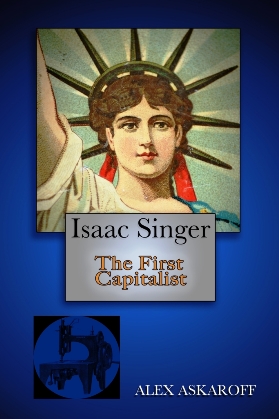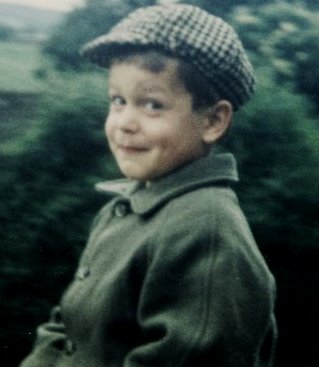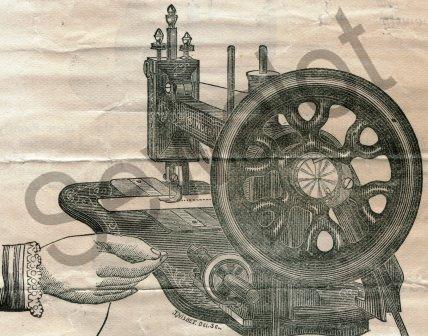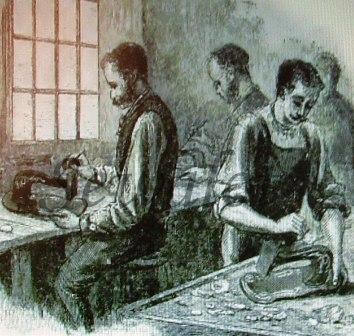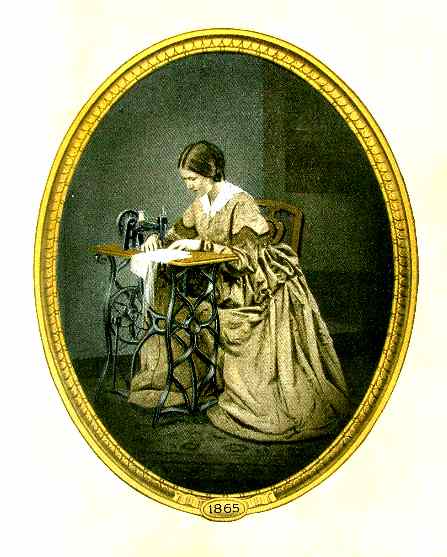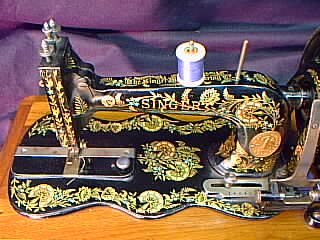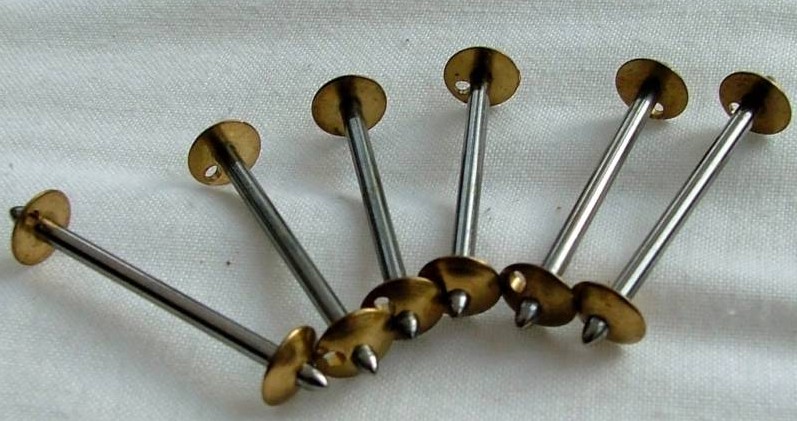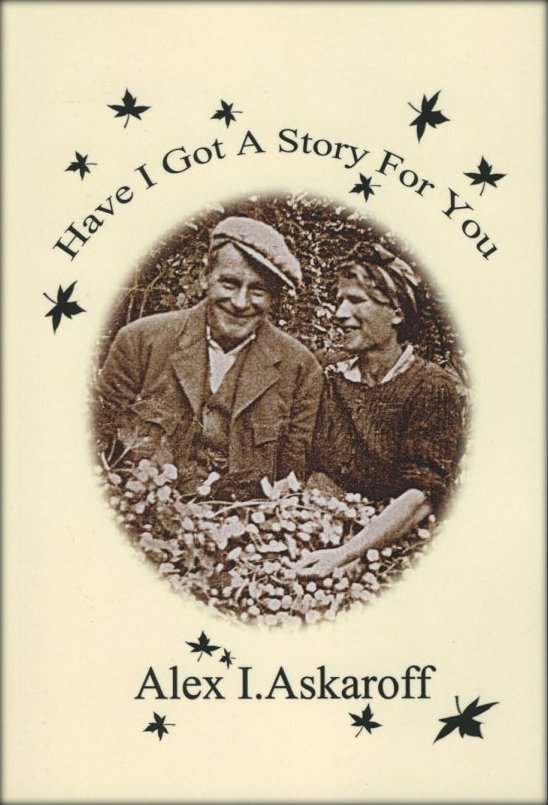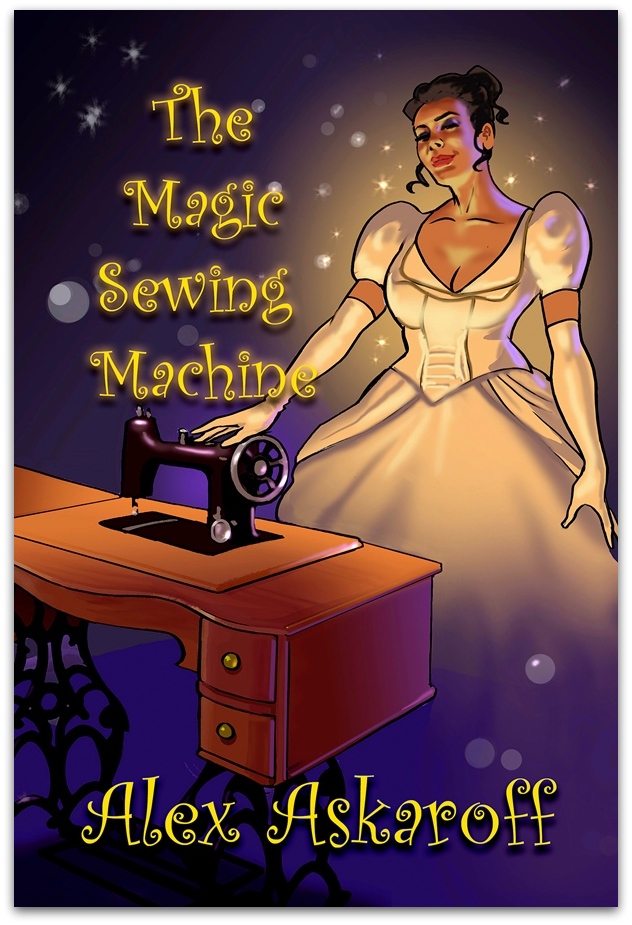|
||||
|
|
Alex I Askaroff
Alex has spent a lifetime in the sewing industry and is considered one of the foremost experts of pioneering machines and their inventors. He has written extensively for trade magazines, radio, television, books and publications worldwide.
Over the last two decades Alex has been painstakingly building this website to encourage enthusiasts around around the Globe to continue with research.
See Alex Askaroff on Youtube http://www.youtube.com/watch?v=8-NVWFkm0sA&list=UL
|
|||
|
The Singer 12 New Family Sewing Machine of 1865 The Singer 12 was the last sewing machine that really had the fingerprint of the great Isaac Merritt Singer on it. He was a genius at seeing potential and the model 12 had limitless potential. The world was still waiting for the perfect machine and at last it was here. The machine that the Singer Company brought onto the market in 1864-5 changed the world we know. It was one of the first really reliable and easy to use lockstitch sewing machines in the entire history of the planet. WOW.
The Strange Tale There are some wonderful legends about the New Family sewing machine and its invention. One of the best concerns one of Singer's salesmen, James Bolton (1832-1916) who, amongst other places, ran the Singer Chicago office at 50 Clark Street. His tale is a cracker and well worth repeating. The tales goes that (according to James Bolton) it was him who built the first New Family sewing machine! WOW. He somehow single handed built this masterpiece while working as a salesman. He then sent his machine to Singer Head Office to see what they thought. According to Bolton the machine mysteriously disappeared. Isaac apparently (according to Bolton) stated that the best thing to do with Bolton's machine was to improve it with a sledge hammer! After failing to impress Isaac Singer, Bolton then tried to flog another to Elias Howe. He was apparently too broke to buy it. Really, one of the richest men in America at the time! Of course this is just a good tale (told by James Bolton himself many years after Elias and Isaac had died and could not sue). Unfortunately for James Bolton his tale is not backed up by a single fact...so far. It is impossible to even suggest that two of the greatest sewing machine pioneers of the period did not see the potential in a machine supposedly supplied by Bolton! Also no law suits were brought by Bolton in later years when the Singer 12 became the No1 selling sewing machine on the Planet! Oh and how the Germans would have loved Bolton who could have broken Singers patent hold over the machine if he could prove anything he was saying! Who designed the Singer Model 12? The truth is that many people were involved in the designs of sewing machines at Singers, including Isaac Singer himself. Singer's had the latest and best minds working on improvements. Singer himself often adding his ideas. Even sending them to his design team while he was away. I have a few copies of his notes sent from England about improvements to his current machines and treadles. In truth James Bolton's own version is as fancy as one of Singer's mistresses. Bolton was familiar with patents (patenting 26 of his own ideas) But why not patent his amazing idea? He failed to patent his special model 12. Apparently he simply gave it to Singers and went back to work for his $15 a week salary! Really...No detailed drawings, prototypes, witness statements! You can see where I am going here, as much as I hate saying it I believe Bolton stretched the truth of his involvement, big time. Some of his supposed improvements, that he gave to Clark and Singer just don't hold water. He apparently invented (and once again gave them away free) a lifter mechanism that lifted a full inch higher than any machine on the market! Now I have worked on many thousands of sewing machines over the last 40 years, including many of the early Singers. The Singer model 7 was a monster (Marlow Ropes in Hailsham, East Sussex, had three of them, to join the ends of their flax/linen ropes). The model 7 has a huge lift and for Bolton to pretend that he made improvements to lift a machine an inch higher that that, is dubious. To alter this one action you would have to alter many more parts just to make a machine function, from the needle bar to the presser bar and every internal part they work by. The needle would have to be an extra inch longer for a start, then everything that moved it would have to be altered too. Oh I do seem to be a 'moaning Minnie' here, but hear me out I'm nearly done. It is a great story, but like Bolton's hemmers, which he tells he made better than anyone else, none have turned up so far to corroborate his story. To say, (like he said with his needles) that all the others on the market (made by experts) were no good, is simply unbelievable. The Facts! Let's look at the facts. We know that James Bolton was employed by Singer and he started right back at the beginning, a year after Isaac's 1851 patent. He was a salesman first and foremost but seemed to be able to have a go at most things. Now this is the rub. James Bolton looked on as so many of his fellow colleagues moved up the Singer ladder, some even ending up as president of the company. James Bolton never managed to get much further than the second rung of that ladder and there is no doubt that this left a bitter taste in his mouth as he watched others become rich. Bolton's fable that Isaac Singer wanted to smash up his prototype New Family Machine is simply absurd. In fact Bolton even admits he was not there (from my research Isaac was not even in the country when he was supposed to have made this statement!). James Bolton wrote detailed memoirs (after Isaac's death when once again he could not be sued by Isaac or any of the others) trying to rewrite his part in the Singer company and portraying Isaac Singer as a blundering fool, who would have destroyed the company without Bolton's constant intervention. Isaac was many things but never a fool. We know that Isaac Singer did know Bolton, but never liked him. It explains Bolton's inability to rise far in the ever expanding Singer business. Isaac left strict instructions with his engineers that Bolton was not allowed to alter, or have anything made, in his absence. Bolton even admitted that Singer would not allow him to talk to him. Bolton also admitted receiving letters from the Singer Company telling him not to interfere with their products and stick to selling them. Bolton also admitted that he was scared of Isaac, he tells, "It would not be safe for me to make any suggestions to Mr Singer." James Bolton's version of events are great reading and he does add some brilliant facts about the early life of the Singer Company. He knew many of the great pioneers of the day, but reading in-between the lines he was more the maintenance man at the football stadium rather than one of the star players. James Bolton saw lots and knew lots about Singer's but he was a salesman at heart and tells a good story (once no one was left to contradict him). How much is true has a huge question mark hanging over it. Probably, when he wrote his version of events, he was totally unaware how much of Singer's history would later become public knowledge.
https://www.youtube.com/watch?v=8_asHiTqqtg&feature=g-upl So let us stick to the facts that we do know, The Singer Model 12 was well into production by the early 1860's, prototypes coming on line well before the mass marketing of the machine in 1865. Its shape and size was altered until the designers were happy with it and patents sorted. Isaac Singer had made mistakes with some of his earlier machines and learnt a bitter lesson as manufacturers like Willcox & Gibbs stormed ahead of him in the market place. The Singer 12 carried on with many modifications over the following years, slowly improving until it was completely replaced with new models at the end of the Victorian period. The Singer 12 or Singer New Family Sewing Machine hit the main market towards the end of the American Civil War around 1864-5 and lasted right up until 1902. It was in production for nearly 40 years. Other manufacturers all over the world were gobsmacked when they first saw the machine, nothing even came close to the amazing Singer model 12. Even today it is one of the most widely sought after and collected sewing machines. Years later, once the patents ran out, nearly every manufacturer of sewing machines in the entire world made an identical copy to the Singer 12. It was simply the best of its kind at the time, The Apple iphone of yesteryear. In Europe it hit the markets in 1866 and was later made at Kilbowie in Scotland as well as Elizabeth Port New Jersey, USA. The last model 12's came out of Kilbowie in 1902 with the Ottoman Carnation design (and R registration).
It was to be the finest sewing machine the world had ever seen at the time and the pinnacle of inventive genius from the design team at Singers. The Singer 12k incorporated the best of every sewing machine idea and was the first sewing machine in history that sewed multiple thicknesses and fabrics with ease and anyone could use it without a degree. In pre-production no less than eleven patents were used including Elias Howe's 1846 patent (under licence, of course). The Singer 12 sewing machine was also the first sewing machine that was easy to demonstrate as it was so 'user friendly' to the masses. It ticked all the boxes. By the time you had threaded a Wheeler and Wilson or a Grover & Baker sewing machine up you had finished the seam with the Singer 12 sewing machine and gone shopping. Designed partially by Isaac Singer between 1861-4 The Singer 12 came onto the market towards the end of the American Civil War. the Singer model 12 was the modern marvel of 1865 and would become the best selling machine of the age.
It was the formidable Singer 12 or 12k (K, made in Britain) that added huge wealth to the coffers of Isaac singer in his old age. Well that's before he had a heart attack shortly after arranging one of his countless children's weddings. You'll have to read the fascinating history of one of America's most remarkable men. Isaac Merritt Singer. The K after the 12 denoted that it was made in Kilbowie in Scotland just over the border from the other Elias Howe patents that held power over sewing machine production in England. It is a funny point but some of the Singer 12 hand wheels to some countries were painted black to avoid import duties into some countries that considered plated metal a luxury and taxed it!
From the Singer 12 machine almost every manufacturer copied the transverse shuttle, straight needle and countless other innovations. The Germans carried on with similar designs and high-arm models for over 40 years finding it difficult to improve on. Almost every manufacturer produced a similar machine once the Singer patents ran out and by 1880 a hundred clones of this machine existed but none beat Singer for shear quality and reliability. I can just imagine seeing all the competitors faces in 1865 when they saw this machine for the first time. It must have taken their breath away. Even today a Singer 12 sewing machine will stitch most fabrics with ease. Singer New Family model 12 sewing machine of 1865
Values Singer 12 new family Many collectors will have at least one Singer 12 sewing machine in their collection and good quality ones always fetch excellent prices. They represent a period in our evolution and are a part of living history. The hands that turned the machine just after the American Civil War were our distant relatives. The machine clothed a nation, made wedding dresses, christening gowns, husbands work trousers and a million other daily items. They were all were made on the fabulous Singer 12 New Family Sewing Machine.
Collectors today think that they are paying a lot for their Singers sewing machine but in 1865 a new Singer 12 sewing machine would cost a years wages and was often bought over a 10 year period on hire purchase. No wonder they were so good, they cost more than a new car does today! The highest price I have seen so far for a standard Singer 12 was $1684 in April 2011. That will probably be beaten. Remember this, the only thing that truly lasts is quality and no sewing machine ever made beat the Singer Model 12 New Family sewing machine for sheer quality. That is why today they are still with us. Name anything made in the1860's that is still in regular use today. Some useful dates for the Singer 12 and other pre 1900 Singers.
The amazing story of Most of us know the name Singer but few are aware of his amazing life story, his rags to riches journey from a little runaway to one of the richest men of his age. The story of Isaac Merritt Singer will blow your mind, his wives and lovers his castles and palaces all built on the back of one of the greatest inventions of the 19th century. For the first time the most complete story of a forgotten giant is brought to you by Alex Askaroff.
Singer 12k bobbins, New Family Fiddlebase bobbins
Singer 12, 12k New Family Fiddlebase 12x1 size 14/90 general purpose use.
Most of us know the name Singer but few are aware of his amazing life story, his rags to riches journey from a little runaway to one of the richest men of his age. The story of Isaac Merritt Singer will blow your mind, his wives and lovers his castles and palaces all built on the back of one of the greatest inventions of the 19th century. For the first time the most complete story of a forgotten giant is brought to you by Alex Askaroff. News Flash! Alex's books are now all available to download or buy as paperback on Amazon worldwide.
"This
may just be the best book I've ever read."
"My five grandchildren are
reading this book aloud to each other from my Kindle every Sunday.
The way it's written you can just imagine walking
beside him seeing the things he does. News Flash! Alex's books are now all available to download or buy as paperback on Amazon worldwide.
|
||||
|
Fancy a funny FREE read: Ena Wilf & The One-Armed Machinist
|
||||
|
|
As a
new collector I have found your site
has increased my knowledge in
a short time to a degree
that I couldn't have
imagined.
Hi Alex
|
|
||
|
CONTACT: alexsussex@aol.com Copyright © |
||||
